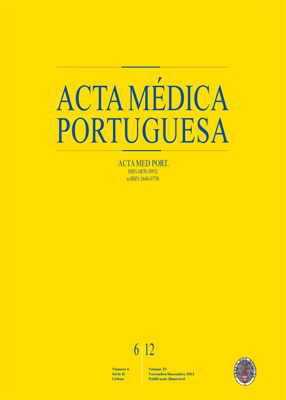Identification of Therapeutic and Diagnotic Targets Through Yeast Two Hybrid System: Molecular Biology in Medicine
DOI:
https://doi.org/10.20344/amp.1361Abstract
In the last decades, molecular biology development was driven medicine, mainly in identification of novel therapeutic and diagnosticstargets. In cells, proteins are the main responsible for the functioning of all cellular processes, from DNA synthesis to RNA and proteinproduction, transport of cellular components and structural composition of the cell. Proteins are also an important component of signalingpathways between cells. Studies show that proteins normally do not function as singular units but as protein complexes. Understandprotein interactions and discover compounds that interfere with such protein complexes are important to develop new pharmacologictreatments. There are already some drugs with such characteristics. Trichostatin A, a histone diacetilase, acts in Phosphatase protein1 – Histone diacetilase complex, being a good target for anti-cancer therapy.In 1989, in a revolutionary way, Fields and Songs developed the Yeast Two Hybrid system (YTH). This method is based in the geneticproperties of Saccharomyces cerevisiae and allows the detection of protein interactions in vivo. Since its development it suffered a fewmodifications that allowed its application in translational medicine. For example, this technique allows a high throughput screening toassess if a drug can interfere with a protein interaction. In the other hand, YTH can be used to ascertain which proteins interact witha protein of interest in a specific tissue (for example, brain or testis). Thus it is possible to unveil protein functions, signaling pathwaysand tissue functions. The great amount of data produced with YTH allows the identification and validation of diagnostic and therapeutictargets and also the development of new drugs.This review has the purpose to clarify the YTH system function and its contribution in identification of new pharmacologic treatments.
Downloads
Downloads
Published
How to Cite
Issue
Section
License
All the articles published in the AMP are open access and comply with the requirements of funding agencies or academic institutions. The AMP is governed by the terms of the Creative Commons ‘Attribution – Non-Commercial Use - (CC-BY-NC)’ license, regarding the use by third parties.
It is the author’s responsibility to obtain approval for the reproduction of figures, tables, etc. from other publications.
Upon acceptance of an article for publication, the authors will be asked to complete the ICMJE “Copyright Liability and Copyright Sharing Statement “(http://www.actamedicaportuguesa.com/info/AMP-NormasPublicacao.pdf) and the “Declaration of Potential Conflicts of Interest” (http:// www.icmje.org/conflicts-of-interest). An e-mail will be sent to the corresponding author to acknowledge receipt of the manuscript.
After publication, the authors are authorised to make their articles available in repositories of their institutions of origin, as long as they always mention where they were published and according to the Creative Commons license.









